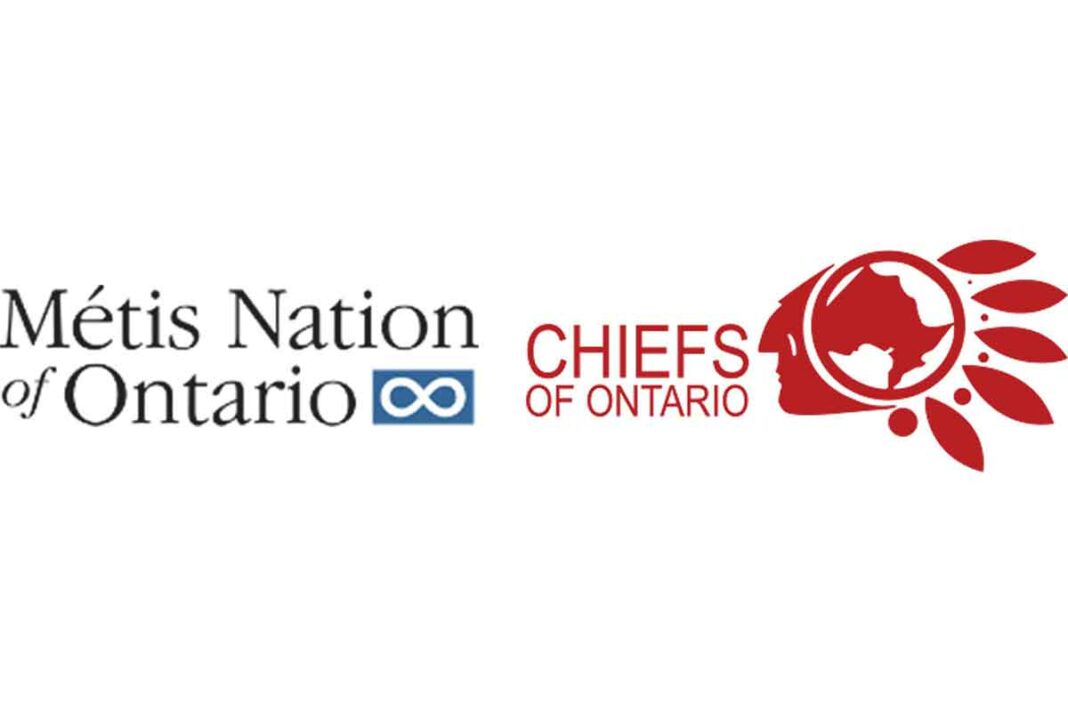ONTARIO—A controversial new report by the Métis National Council (MNC) is stirring deep tensions between the Métis Nation of Ontario (MNO) and Indigenous leadership across Ontario — including among First Nations within the Robinson Huron Treaty area.
The 264-page review, released April 11 and titled ‘National Definition of Métis: A Review of Communities in Ontario,’ affirms the existence of seven historic Métis communities in the province, including nearby Sault Ste. Marie, Northern Lake Superior, Killarney and Georgian Bay. The findings, hailed as vindication by MNO leaders, have been roundly rejected by Métis governments in Manitoba, Saskatchewan, and British Columbia, as well as by the Chiefs of Ontario and a group representing 21 First Nations under the Robinson Huron Treaty.
On Manitoulin Island, where identity, kinship, and territorial recognition remain cornerstones of political and cultural life, the report has struck a particularly raw nerve.
“This is about more than paperwork or political maneuvering — it’s about the erasure of our own histories, of who belongs to these lands,” said Lake Huron Regional Chief Scott McLeod, a member of the Robinson Huron Waawiindamaagewin (RHW) political working group.
In a statement issued Thursday, RHW condemned the MNC report as “rife with historical inaccuracies” and accused the expert panel of “doubling down on the MNO’s efforts to revise and misrepresent the histories of our lands and ancestors.”
The MNC Expert Panel, appointed in 2021 before the departure of Métis Nation-Saskatchewan and Métis Nation BC from the Council, reviewed over 50,000 pages of documentation and visited each of the seven communities before concluding they met the criteria for Métis nationhood: shared ancestry, political organization, cultural cohesion, and historic ties to specific lands and waterways.
For Margaret Froh, president of the MNO, the review is a landmark.
“This report is not about identity politics; it’s about community — and it affirms what our citizens already know in their bones,” Ms. Froh told APTN. “We hope this can be a starting point for renewed dialogue with our First Nations neighbours — and sometimes kin.”
But not everyone sees it as a conversation starter. Critics, including Anishinabek Nation leadership and western Métis governments, have called the report a “whitewash” that ignores Métis identity as rooted in the Red River homeland and defined by kinship — not genealogy alone.
“There’s still no connection to the nation,” said Will Goodon of the Manitoba Métis Federation. “This is identity built on individual claims, not collective memory.”
Even more forceful was the reaction from Chief McLeod, who challenged the report’s claim that a peace and friendship treaty was renewed between the Anishinabek Nation and the MNO in 2015. “To suggest otherwise not only misrepresents history — it undermines the spirit and intent of the treaties themselves,” he said.
The war of words is not new. In recent years, RHW, Wabun Tribal Council, and the MMF have each commissioned academic studies rejecting MNO’s claims to represent historic Métis communities in Ontario, including in Sault Ste. Marie. In turn, MNO leaders have accused their detractors of lateral violence and perpetuating what the Expert Panel controversially likened to “cultural genocide”—a comparison that drew sharp rebukes from First Nations leadership.
“They’re trying to gaslight us by using residential school language to defend a flawed process,” Regional Chief McLeod said. “It’s offensive and it’s despicable.”
The fallout from the report may also have funding implications. As First Nations communities continue to fight for adequate program dollars, some leaders fear that recognition of these new Métis communities could dilute entitlements tied to treaty obligations.
“It’s not just about our moose, our medicines, or our forests anymore,” Chief McLeod warned. “It’s about the dollars that were meant to serve our people.”
On the Island and throughout the Robinson Huron Treaty territory, where land claims, treaty annuities, and the long shadows of colonization continue to shape everyday life, the dispute goes far beyond bureaucracy. It strikes at the very heart of who gets to belong, and who gets to decide.
For now, both sides remain entrenched. The MNO is celebrating what it sees as long-overdue recognition, while First Nations leaders and western Métis governments stand firm in their opposition, dismissing the report as a political manoeuvre cloaked in research.
As the Métis Nation of Ontario moves forward “with another tool in its toolbox,” as Ms. Froh put it, Anishinaabe leadership insists the tools used to build this report were forged without consent — and without connection.
The full report is available at www.metisnation.ca/expert-panel






